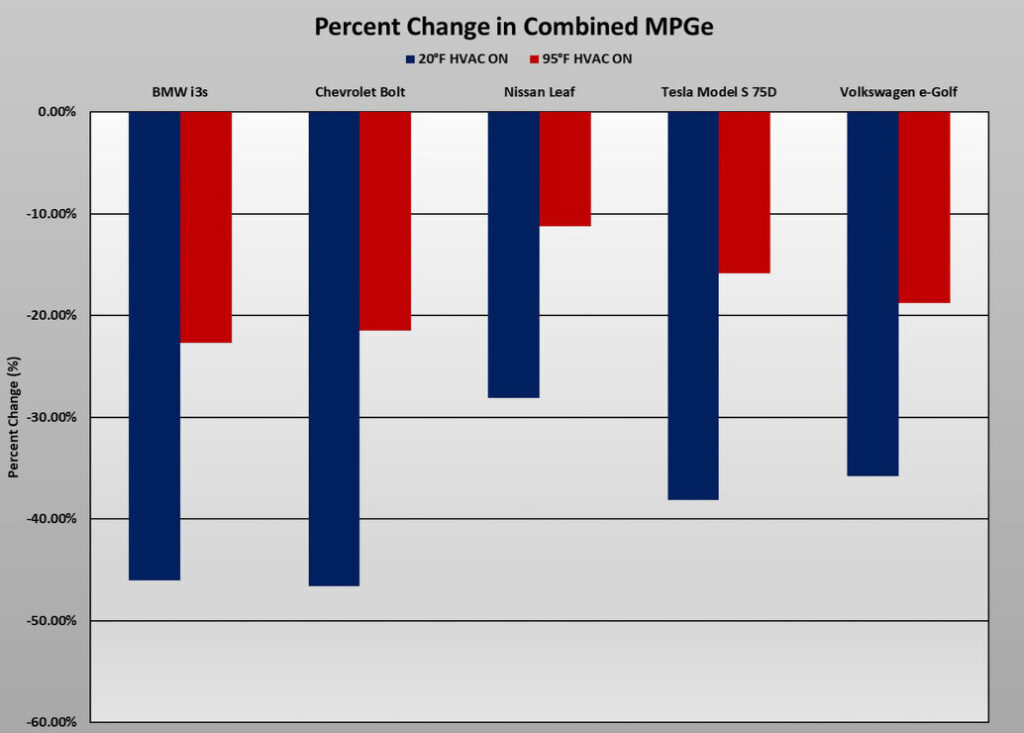EV ‘fuel economy’ tested

(Courtesy of the AAA)
The Automobile Association of America (AAA) has conducted primary research into understanding the effects of ambient temperatures on the range and equivalent fuel economy of five battery electric vehicles (writes Nick Flaherty).
Testing was carried out at 20 F (-7 C), 75 F (24 C) and 95 F (35 C). For these temperatures, the effect of various HVAC systems on the battery range and equivalent fuel economy was evaluated, showing a drop of up to 12% in range for the coldest tests.
The study also looked at the cost of driving 1000 miles in various environments with and without the HVAC system engaged. This showed that with the HVAC in operation, the range dropped by up to 41%.
The AAA tested the BMW i3, Chevy Bolt, Tesla Model S 750D, VW e-Golf and the Nissan Leaf. Each one was given a full charge at the tested temperature before moving on to the next test temperature.
Once a vehicle finished charging and it was time to change test temperatures, the vehicle was soaked for a minimum of four hours after the test cell was stabilised at the new test temperature before carrying out a new road-load test and running preconditioning cycles until the battery was depleted.
For all dynamometer tests, the power analyser measured all the current entering and leaving the traction battery pack at a rate of 20 Hz. The traction battery voltage was obtained from the vehicle network data, with a sampling frequency dependent on the CAN bus traffic and architecture.
To synchronise current and voltage data, cubic spline interpolation was performed on the captured voltage dataset to provide interpolated data with a frequency of 20 Hz. The voltage interpolation was also timesynchronised and multiplied with current data to calculate traction battery wattage output/input.
For each dynamometer test, the calculated wattage was numerically integrated with respect to time to calculate DC discharge watt-hours in total and for each drive phase. These values were used to calculate phase scaling factors and DC energy consumption (kWh/mile) per drive phase.
ONLINE PARTNERS






















